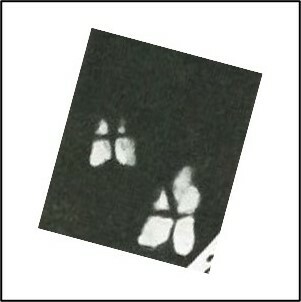Sphenolithus belemnos
Set number: 957
-
1
-
2
-
3
-
4
-
5
-
6
-
7
-
8
10µm
Set number: 958
-
1
-
2
-
3
-
4
10µm
Set number: 960
-
1
-
2
-
3
-
4
-
5
-
6
10µm
Set number: 961
-
1
-
2
-
3
-
4
-
5
-
6
-
7
10µm
Set number: 959
-
1
-
2
-
3
-
4
10µm
Sphenolithus belemnos Bramlette & Wilcoxon, 1967
Medium to large size (4.0-9.0µm) elegant species of Sphenolithus having three cycles of segments.
The apical spine with axial c-axis made up of three longitudinal blades. It is extinct (dim) at 0° but displays maximum birefringence at 45° (parallel extinction).
The lateral cycle is diminutive, and its segments are aligned longitudinally at 0°.
The cylindrical proximal cycle is elongated and its segments may be flare outward at the proximal end. Inner ends of its segments joined at least half of their length along the longitudinal axis but not joined nearer the proximal end, thus creating a shallow conical proximal cavity.
Sphenolithus belemnos differs from Sphenolithus quasibelemnos Varol, in. prep. by having a well developed apical spine, whereas the apical spine is diminutive in the latter species.
Sphenolithus belemnos is easily distinguished from Sphenolithus heteromorphus Deflandre, 1953 by having a tall, elongated cylindrical proximal cycle and the diminutive lateral cycle [their segments aligned longitudinally 0°]. In Sphenolithus heteromorphus, frustum shape proximal cycle [with a conical proximal cavity] and lateral cycles are equally well developed.
Bramlette, M. N., Wilcoxon, J. A., 1967. Middle Tertiary calcareous nannoplankton of the Cipero section, Trinidad, W.I. Tulane Studies in Geology and Paleontology 5, 93-131.
Deflandre, G., 1953. Hétérogénéité intrinsèque et pluralité des éleménts dans les coccolithes actuels et fossiles. Comptes Rendus Hebdomadaires des Séances de l'Académie des Sciences, Paris 237, 1785-1787.




